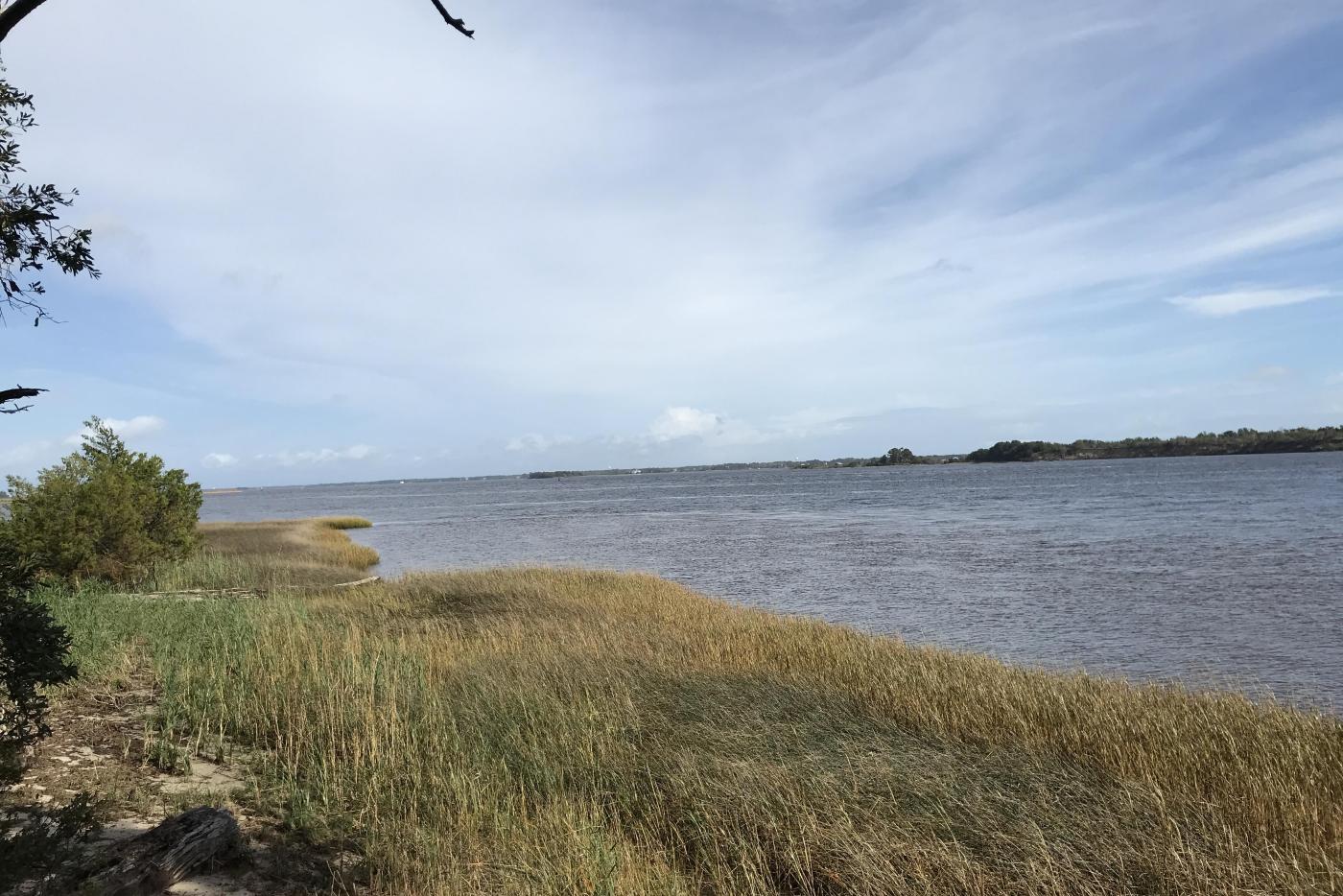The N.C. Department of Natural and Cultural Resources (DNCR) is pleased to announce it has received a $2.5 million grant from the National Oceanic and Atmospheric Administration (NOAA) to support shoreline restoration and coastal resiliency at Brunswick Town/Fort Anderson (BTFA) State Historic Site in Winnabow, N.C.
The site, located along the Cape Fear River, has experienced significant shoreline erosion due to severe weather and daily tidal forces from increased vessel traffic on the river. The rapidly diminishing shoreline has resulted in the loss of habitat and worsening flooding conditions in the area.
The grant will allow DNCR to continue building and installing a system of wave attenuators that protect the shoreline from erosion. This approach has documented success in reducing wave action, mitigating shoreline erosion, protecting wildlife, facilitating the growth of natural habitat, and safeguarding historical resources still buried at the site.
“It is important to protect both our state's rich history and its cultural resources. I am proud to have worked with the North Carolina Department of Natural and Cultural Resources to secure this federal funding, protecting the Brunswick Town – Fort Anderson site for generations to come,” said Congressman David Rouzer. “By investing in these shoreline restoration and resiliency efforts, we’re not only preserving important history, but also better protecting this historic shoreline and the surrounding community from future natural disasters."
The living shoreline makes BTFA more resilient from natural disasters and supports the community through sustained education, recreation and tourism. The BTFA Shoreline Restoration Project is a collaborative effort between DNCR, UNC Wilmington, and the N.C. Division of Coastal Management.
“In the last 81 years, Brunswick Town/Fort Anderson has lost over 12 acres of shoreline from accelerating erosion, endangering an untold number of historical and cultural resources,” said Michelle Lanier, director of North Carolina Historic Sites. "The good news is, since 2017, Brunswick Town's living shoreline has become a national model for coastal resiliency. We are thrilled that this critical project will continue thanks to the support of our partners at NOAA.”
A major pre-Revolutionary port on North Carolina’s Cape Fear River, Brunswick was razed by British troops in 1776 and was never rebuilt. During the Civil War, Fort Anderson was constructed atop the old village site, and served as part of the Cape Fear River defenses below Wilmington before the fall of the Confederacy.
About the North Carolina Department of Natural and Cultural Resources
The N.C. Department of Natural and Cultural Resources (DNCR) manages, promotes, and enhances the things that people love about North Carolina – its diverse arts and culture, rich history, and spectacular natural areas. Through its programs, the department enhances education, stimulates economic development, improves public health, expands accessibility, and strengthens community resiliency.
The department manages over 100 locations across the state, including 27 historic sites, seven history museums, two art museums, five science museums, four aquariums, 35 state parks, four recreation areas, dozens of state trails and natural areas, the North Carolina Zoo, the State Library, the State Archives, the N.C. Arts Council, the African American Heritage Commission, the American Indian Heritage Commission, the State Historic Preservation Office, the Office of State Archaeology, the Highway Historical Markers program, the N.C. Land and Water Fund, and the Natural Heritage Program. For more information, please visit www.dncr.nc.gov.

